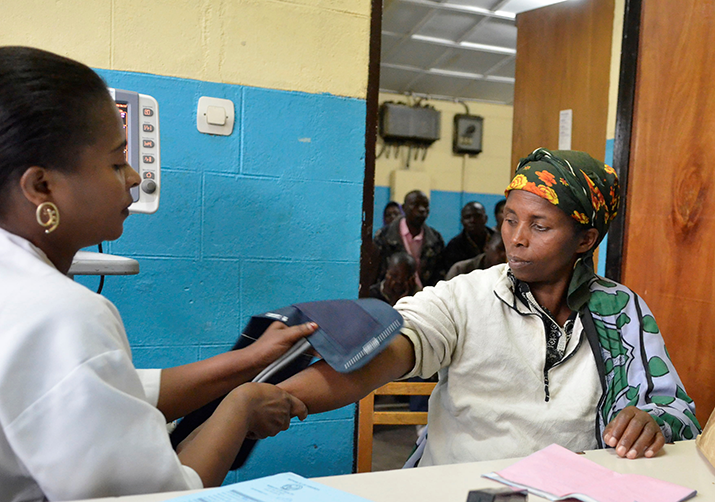Putting Patients First: Reducing Hospital Waiting Times in Rwanda
Putting Patients First: Reducing Hospital Waiting Times in Rwanda

When Ruhengeri Hospital in northern Rwanda upgraded from a district to a referral hospital in 2014, it began receiving cases from 15 health centers in its own district and five hospitals in surrounding districts. In 2015 alone, the hospital had nearly 6,000 monthly outpatient visits—about 25% above previous levels and among the highest in the country. While these numbers indicate how important the status upgrade was in relation to local health needs, the facility struggled to consistently meet those needs. After a day of waiting, some patients left unserved or simply walked away in frustration.
“I have an appointment card but there are times when I have come to the hospital at 6 am, hoping to avoid the delays but ended up seeing the doctor as late as 3 pm,” says 70-year-old Thomas Ziragwira. For more than 10 years, Ziragwira has come to Ruhengeri Hospital for his insulin. “All that waiting, especially for someone my age, is very frustrating, but I can’t just leave and ignore my condition,” he says.
Aiming to ensure better quality services in its new environment, Ruhengeri Hospital looked to a Ministry of Health program for quality improvement and accreditation of health care facilities, which is being implemented in partnership with the USAID-funded Rwanda Health Systems Strengthening (RHSS) Project, led by MSH. The program works with public district hospitals and provincial referral hospitals to address factors that impact the efficiency, safety, and responsiveness of health services.
With technical assistance from the RHSS Project, Ruhengeri Hospital conducted a patient flow analysis to identify the obstacles to timely care in its internal medicine department, which accounts for nearly one-third of facility demand. Results from the analysis led to solutions such as redesigning billing sheets to simplify patient processing, instituting a first-time appointment system for patients referred from surrounding health centers, and reassigning two physicians to the internal medicine department to improve the patient-to-doctor ratio. Quality improvement measures often include staff training as well.
“Over the past few months, I have been coming to the hospital for my scheduled appointments, and I can really tell that something has changed,” Ziragwira says. “I have noticed that I am spending a lot less time waiting to see a doctor. I’m very happy, and my family is too, because they don’t have to worry about me coming home late. I’ll be back in one month for my next appointment, and I hope to wait for even less time.”
Thanks to a USAID-supported health care quality improvement initiative, other patients like Thomas Ziragwira will not have to wait for long periods of time to receive quality care. Overall, the internal medicine ward at Ruhengeri Hospital has reduced average outpatient waiting times from seven hours to less than four hours in just six months and hopes to decrease that time even more in the future.